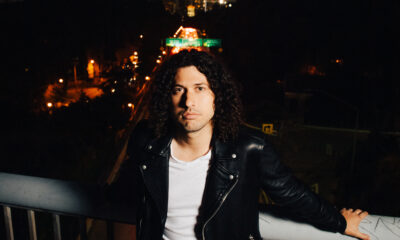National News
Analysis: What You Need to Know About the Iran Deal
Relationship status: it’s complicated.
On Tuesday, President Donald Trump announced that the U.S. will be withdrawing from the Iran deal – an accord created in 2015 by the Obama administration and signed by the UK, Germany, France, China, and Russia.
The Iran deal – formally titled the Joint Comprehensive Plan of Action (JCPOA) – was the result of two years of negotiations, and its purpose was to limit Iran’s nuclear program. Iran had maintained that its nuclear program was peaceful, but internationally there were concerns about the regime developing a nuclear bomb. Under the deal, Iran had agreed to limit the program, and in exchange six countries – U.S, UK, France, Germany, China, and Russia – and the European Union agreed to lift their sanctions on Iran, which had crippled Iran’s economy.
What was under the deal?
Uranium Enrichment Limitations
The JCPOA added limits to enriched uranium, which contains high levels of the isotope Uranium-235, making it the key ingredient to make a nuclear bomb. Low-enriched uranium contains about 3%-4% of U-235 and can be used as energy for nuclear power plants, while nuclear bombs have a level of 90% of U-235. The deal banned Iran from possessing uranium that had above 3.67% of U-235, and prohibited them from having more than 660 pounds of enriched uranium until 2031– in contrast, before the deal Iran had a stockpile of more than 25,000 pounds. Iran had been complying with these restrictions and had decreased its uranium stockpile by 90%.
Centrifuge Limitations
Enriched uranium is created by separating the isotope U-235 – which is only 1% of uranium – from the uranium’s natural form, and the process occurs in centrifuges. Iran had two facilities with these centrifuges –Natanz and Fordo – and had about 20,000 centrifuges. The JCPOA limited the enrichment sites to only Natanz, and also limited Iran to installing at most 5,060 of its oldest centrifuges until 2026; Iran was abiding with these restrictions, and had greatly reduced the number of centrifuges.
Plutonium Limitations
Plutonium can also be used to create a nuclear bomb, and fuel from heavy-water nuclear reactors can produce the required plutonium to make a nuclear weapon. Iran had this heavy-water reactor located in the city of Arak, but under the deal Iran agreed to redesign the reactor, to ensure it would not produce any fissile material. Under the JCPOA, Iran also agreed to not build more heavy-water reactors until the year 2031. Iran had adhered to these restrictions.
Inspections
In addition, under the JCPOA Iran was required to allow inspectors from the International Atomic Energy Agency (IAEA) to monitor their nuclear sites, and to allow them access to any location they deemed suspicious – the latter rule was part of the Additional Protocol Iran was required to add to their IAEA Safeguards Agreement. Iran had been fully complying with the agreement, and was cooperating with the inspectors, who found no violations.
Why did Trump end the deal?
In 2015, the Obama administration stated that Iran had a large amount of enriched uranium, and about 20,000 centrifuges, which would have been enough to create 10 bombs. At the time, Iran could have acquired enough 90% enriched uranium to build a nuclear weapon in about two to three months. However, the JCPOA eliminated the main materials Iran would need to build a nuclear bomb, and since then the IAEA’s agency Director, Yukiya Amano has stated that Iran has been complying with the JCPOA, except for minor infractions that were later fixed by the regime.
However, on May 8 President Donald Trump withdrew from the JCPOA calling it “a horrible one-sided deal,” a sentiment he had shared on the campaign trail. Trump also announced that sanctions will be implemented again, targeting key areas of the Iran economy, and effectively ending the JCPOA.
Trump has stated that the deal should have limited Iran’s missiles program – specifically keeping Iran from building an intercontinental ballistic missile. He also criticized the deal for not curbing Iran from supporting groups such as Hezbollah, the Houthis in Yemen, and the Syrian regime.
International Response
The UK, France, and Germany have all expressed “regret and concern” at the U. S’s withdrawal from the deal and have maintained their “continuing commitment” to the JCPOA. France’s President, Emmanuel Macron, stated that while the deal was imperfect, there was no Plan B.
Iran’s President, Hassan Rouhani, stated on Tuesday, “I have directed the Atomic Energy Agency to prepare for the next steps, if necessary, to begin our own industrial enrichment without restriction.” He added that they will wait a few weeks before acting on the decision, in order to consult with their allies, and other members of the JCPOA.
Jumpstart a career doing something you are passionate about with one of College Media Network’s courses. Read about our current offerings, schedule and unique virtual learning environment here.











